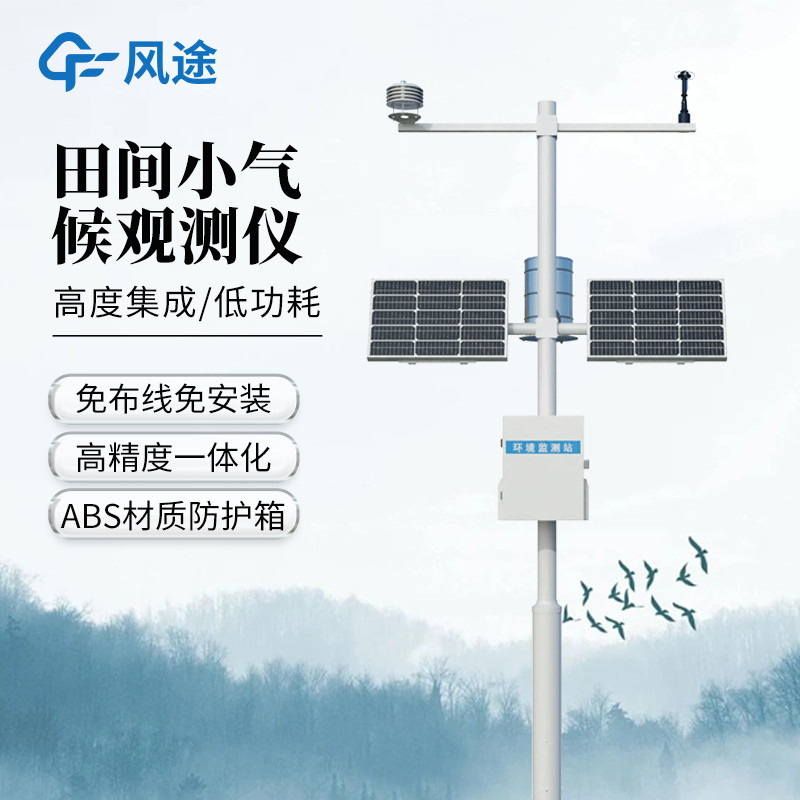Tianyi Sensor IOT Technology Co., Ltd
Sales Manager:Ms. Emily Wang
Cel,Whatsapp,Wechat:+86 15898932201
Email:info@fengtutec.com
Add:No. 155 Optoelectronic Industry Accelerator, Gaoxin District, Weifang, Shandong, China

Sales Manager:Ms. Emily Wang
Cel,Whatsapp,Wechat:+86 15898932201
Email:info@fengtutec.com
Add:No. 155 Optoelectronic Industry Accelerator, Gaoxin District, Weifang, Shandong, China
time:2025-05-15 10:38:32 source:Weather Station viewed:146 time
Agriculture, as the foundation of human survival, is intricately linked to the weather. Weather conditions profoundly influence every aspect of agricultural production.
During the sowing stage, seed germination requires suitable accumulated temperature, typically above 10°C. If the temperature is too low, seeds will fall into a deep dormant state and fail to germinate normally. Excessively dry soil lacking sufficient moisture is unfavorable for seed growth, while overly hot and humid conditions may cause seeds to rot.
During the flowering stage of crops, weather directly affects the quality of pollination. The harvesting stage is equally subject to weather constraints. Sunny weather is ideal for harvesting, as it not only facilitates timely drying of crops but also reduces transportation challenges.
Faced with such extensive and critical impacts of weather on agricultural production, how can we effectively respond? The Farmland Weather Station is an advanced device specifically designed to monitor agricultural meteorological environment parameters. Composed of a main control unit paired with multiple sensors, it can rapidly detect key meteorological indicators in agricultural environments, such as temperature, humidity, light intensity, carbon dioxide concentration, photosynthetically active radiation, soil temperature, and soil moisture. Additionally, users can flexibly expand up to 32 different types of sensors according to actual needs. The monitored meteorological data can be uploaded to a cloud platform wirelessly, enabling users to remotely view and analyze the information.
This station provides real-time monitoring of farmland meteorological conditions, offering agricultural workers intuitive and accurate environmental information to help them better grasp changes in farmland environments and provide a scientific basis for agricultural production decisions. With the aid of monitoring data, farmers can more scientifically plan planting, management, harvesting, and other aspects of crop production. It also contributes to promoting sustainable agricultural development: through real-time monitoring, farmers can more precisely control the use of fertilizers and pesticides, reduce agricultural non-point source pollution, and protect the ecological environment. The Farmland Weather Station provides a powerful support for agricultural production to withstand the adverse effects of weather changes, making it an indispensable helper in the development of modern agriculture.

Ultrasonic resonance anemometry is a commonly used meteorological observation technology. Its principle is to utilize the propagation characteristics of ultrasonic waves in the air to measure wind speed and wind direction. When sound waves propagate in the air, their speed will be affected by the wi...
To achieve efficient crop production in greenhouses, it is essential to precisely control key environmental factors:Temperature: Different crops have specific optimal temperature ranges. Excessively high or low temperatures can hinder their growth.Air humidity: Too high air humidity easily triggers...
When it comes to anemometers, the most classic Mechanical anemometer immediately comes to mind. It realizes the measurement of wind speed and direction through mechanical structures and physical principles, and its classic nature stems from a mature technical system and extensive application practic...
Measuring river water levels is necessary for flood control and disaster reduction. Through real-time monitoring of river water levels, we can timely grasp the changes in water levels, issue warnings before floods arrive, strive for time for personnel evacuation and property transfer, and minimize t...